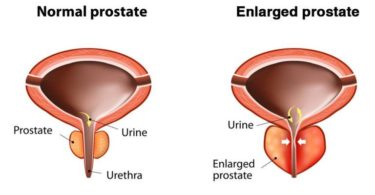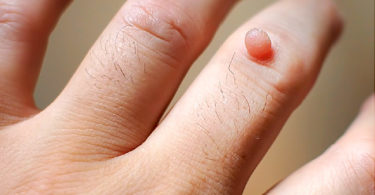You know that according to Hahnemann there are three causes of diseases Psora, Sycosis and Syphilis. Like all other doctors of his time, Hahnemann was right not to make any distinction between soft chancre and indurated chancre and to include in Syphilis other morbid menifestations. Never the less he recognized the primordial value of the miasmsycosis. As regrdsPsora he has given the longest description identified by Dr. A. Nebel with chronic tuberculinism it includes at the same time. The field of arthritisum, some neuro-grandular and sympathetice troubles as well as scrofula and established or unestablished tuberculosis. Thus the problem of Psora is solved. At least that solution proves to be extremely fecund in practice and though we are wait for many other pathological explanations, yet we begin to understand the links that unite numerous morbid manifestations which are constitutional and temperamental. The Sycosis is not described by Hahnnemann as at length as he has described Psora. But the genius of the master already foresaw the breadth of the path of which he first gave the tracing and mentioned the best arm that we still possess to cure the Sycotic troubles.
Thuja Canadensis, the tree of life:
To Hahnemann sycosis is essentially a diathesis producing warts or wart-like growthi.e,.to say vegetating dermotosis to speak in the language of a dermatologist. On the one hand some are real neo-formations; benign cutaneous tumours susceptible sometimes to malignant degenerescencei on the other hand some non-itching dermatosis and all sorts of vegetations. All these growths may be expressed by the phrase “Cutaneous Phenomena of sycotic origin” and they are classified according to their characteristics and formations.
Besides these visible signs it is difficult to characterize the sycotic diathesis because it is essentially torpid and asymptomatic in opposition to Psora of Hahnemann. According to us there is a definite antagonism between these diathesis. The Psora is before all a state of alternance. The life of a Psoric is marked by successions of morbid or torpid states and after an acute eruption follows a silent period followed by an acute phase and so on. On the contrary the troubles caused by this diathesis are slow, insidious, torpid but continued. The sycotic patient constantly suffers from an affection without periodicity and without discontinuity. The warts if they appear will be come chronic without remission. After an asymptomatic first phase, besides the existence of warts will come after a long time different troubles of nervous origin, neuralgias and neuritis. thesycotic patient does not defent himself like Psoric patient by some eruptions on the skin which are generally periodical. His only defence consists in mucous secretions ; chronic catarrh is also the field of Psora.
But it seems that in sycosis the catarrhal symptoms when they exist, establish with difficulty. Perhaps later on more relations will be established between Psora and sycosis. At present we cannot precisely say anything. This question may be solved later on by a deep study of morphology and temperaments as well as psychological and pathological tendencies.
1. Gonorrhoea and Genital Infections:
According to Hahnemann, the most important cause of sycosis is gonorrhea as a consequence of which there results a temperamental change, a chronic gonorrheal condition. You know how Hahnemann gave us Thuja. It is the history of a seminaristwho had a urethral discharge, but who said upon oath that he could not have any genital infection due to direct contact. Hahnemann could have discovered that his seminarist had the habit of chewing the leaves of Thuja while walking in his garden. Thus the action of the plant was discovered. Experimentally it can cause a urethral flow. Thujais therefore an important remedy of acute of chronic gonorrhea.
By extension it was, clinically found that the individual who has A Genital INFECTION. even if the gonococcus is not present, may become later on sycotic after the stoppage of the flow. Then the warts are seen to appear or a chronic catarrh which is very often seen in nasal mucous membrane –[rhino- Pharyngities appear after one or two years of gonorrhea). At the same time the patient hows numerous objective symptoms of the important ground remedies of sycosis; As for example the bluish white colour of the lips (lilac colour), specially of the lower lip.
Later on there appear prostatic and uterine troubles of hyperplastic nature,
[ oederma , fibroma]. These may appear after many years of the first gonorrheal discharge or the person may have some neuralgias and neuritis. At the same time on the body and on the face there appear numerous objective symptoms which are characteristics of THUJA. They are very well described by Dr. Nebel; naevi, lozenge like, deformations of the skin with thickening of the skin specially of the haunchesi orange skin of the Forehead and of the glabella etc.. All these indicate a first gonorrheal discharge, Though followed by apparent curve, has changed the temperament of the individual to such an extent that even he may be Predis posed to cancer by sycosis, just like Psora which can lead to cancer.Let us not forget any kind of confirmed genital flow even when it is not gonorrheal can cause a sycotic condition [ as for example after-birth discharge].
2. ANTI-VARIOLIC VACCINATION.
The second great cause of sycosis is anti-variolic vaccination. We admit that sycosis very rarely results after the primary vaccinations may be dangerous. Specially in cases when they do not take up. It may be evidently accounted for y clinical examination of the patient. Interrogate your patient always having the vaccination in mind, you will know that the patient is suffering from different troubles of nervous origin, nouralgias and neuritis after an unsuccessful vaccination. Officially it is said that the vaccination does not cause any trouble when it does not take up on the contrary. The Homocopaths believe that the vaccinations when they do not take up, some deep troubles will appear sooner or later in future.
A famous
Homocopath of England, Dr. Burnett has under the heading “
Vaccinosis” very clearly described our point of view.
Inspite of the facultative vaccination the number of small pox cases are small in England because of the methodic measures of hygiene taken.
In that milieu, having favourable conditions it was possible for Bunett to write a book full of informations.
3. OTHER VACCINATIONS AND TREATMENT BY SERUMS
We treat generally an individual when he is in such a condition and who has received numerous vaccinations with Thuja as an antidote of vaccinations. Thuja is the most important remedy of sycosis.
The sero Therapy may also cause a sycotic state which is suitable to Thuja. You are thus face to face with the dilemma; The impossibility of saving the life of the patient without precisely knowing the troubles that accompany the sycosis of Hahnemann.
We are naturally led by all that have been stated to try to give a guiding principle where from are reduced the facts that have not escaped our mind, clinically and homeopathically. To be sure, the ground is delicate. Nothing is yet definitely proved.
Regarding the danger of vaccination, However it seems that a patient vaccinated against all sorts of determined acute infections can not avoid real morbid explosions by becoming chronically attacked by diseases that determine each of them. Thus the adults and the olds have rarely high fever. They escape contagious diseases that surround them. They have torpid influenzas, practically adynamic. They are sycotics having good health for being considered as dangerously ill and at the same time are incapable of paying the price of a vigorous defence reaction against a heterogeneous infecting agent. To sum up, a torpid chronic state, due to a more or less artificial immunity prevents the same individuals to react by natural process which should have fought against every infection by an acute state of auto-defence.
I believe without being absolutely certain that the children who do not suffer from infantile eruptive diseases are often sycotic. Very often warts are seen on their body and also all sorts sycotic troubles as Burnett has described them. Sometimes you will find children who are amidst a contagenousmilleu, are not affected by scarlatina, mumps or whooping cough, not even measules. It seems that sycosis fights in them the hereditary Psora and checks finally their possibility of defence-reaction.
4. MALARIA DIATHESIS AND HYDROGENOID CONSTITUTION.
Finally a fourth unaccepted cause of sycosis. I leave it before you with a point of interrogation: It is the malaria, rather malarial diathesis.
The hydrogenoid constitution is specially seen in individuals having rheumatisms, asthama and patients having chronic mucous secretions or still in patients having warty growth which has a tendency to cutaneous hyperplasia.
Let us note on the other hand that THUJA and Natrumsulphuricum, so often indicated in hydrogenoid constitution are also the leading remedies of the ground of rheumatics and asthamatics and of patients suffering from chronic enterocolitis.
Evolution of Sycosis.
Let us note that in sycosis there exists in the beginning a discharge or a secretion from any mucous memberane n opposition of Psora. It is a case of elemination. There may be an elimination through mucous membranes in Psora, but the Psoric patients defends himself specially by eruption, of the skin which may be violent or not, but periodical. There is always the periodicity.
In sycosis, after a flow that lasts for a long time and which stops. This should be specially noted – and there appear some external phenomena’, warty growth, various manifestations or internal phenomena an finally nervous manifestations: neuralgias, myalgias, articular pains, pains of the conjunctive and nerve tissues and even the probability of neuritis. In a word the clinical description of sycosis is very polymorphous, but we may understand it easily. On the one hand a mucous flow in the beginning. Then the stoppage of the flow and afterwards the warty manifestations. As for example in an individual suffering from gonorrhoea at the age of twenty, which was more or less soon cured, has a silent period and in consequence of which there appear the warts, then chronic rheumatism [specially if he had rheumatism during the attack gonorrhoea] or chronic enterocolitis, neuralgias, neuritis, asthma, etc.. In these cases we incriminate sycosis as the cause i.e. a grave morbid state, dominated by the gonorrheal attack at a given time.
in children the question is more problematic and delicate. The heredity is to be considered. The sycotic condition should be sought for in the parents. It is also to be ascertained whether there are some infantile diseases which are characteristically hereditary sycotic.
If it is true that generally acute infantile diseases and eruptive fevers are seen specially in Psoric children i.e., children who are the prey of hereditary tuberculinism, it seems also true that there is sometimes the association of sycosis with psora in the heredity which is predisposed to these affections.
Exceptional Value of Thuja
In any case it is important to consider the importance of THUJA. The king of all great antisycotics indicated by Hahnemann. Hahnemann says :
The King of Sycosis : THUJA
The King of Syphilis : MERCURIUS
The king of Psora : SULPHUR
This has remained always true in Homeopathy. If it is a fact that Hahnemann was hunted by the ideas of the occultists of the middle age who searched in all bodies for the three elements ; mercury, salt and sulphur. These three elements are independent and distinct from the products.
That we designate by these names. The mercury of a body was related to the liquid content; the salt with solid content and sulphur with gaseous contents said the ancients.
To speak the truth I do not believe in this theory. Hahnemann had always a real and modern scientific mind. He affirmed nothing without proof and he criticised violently the physicians of his time who were imbued with the ancient ideas. His affirmations on the role of Thuja, mercury and sulphur were supported by experimental proofs.
Whatever it may be, Thuja is always the leading remedy of sycotic conditions and in all materia medicals or books of Therapeutics you will always see that Thuka should be prescribed after chronic gonorrhoea or repeated vaccinations and its symptoms are found in the patients.
Let us not however believe that Thuja is the only remedy suitable to hydrogenoid type. It may be a suitable remedy of some hydrogenoid types specially of children of the Natrummuriaticum type evolving towards Thuja secondarily.
It is necessary that we should observe carefully the children who are repeatedly vaccinated in order to understand sycosis properly. In these children we will find the vaccinosis of Burnett. When you will observe these children who have been in the age 12 already vaccinated four to five times. I would ask you to have a complete description of their , external and internal troubles you will then clearly understand what is really the sycosis of Hahnemann.
These children are often oxygenoid because they are at the same time Psoric and sycotic. The real hydrogenoidsycotic type is only seen in adults. But we find in them the principal symptoms of Thuja ,Silicea and malandrinum. The three remedies for the troubles caused by vaccinations; constant fatigue, frequent sweats, venous conjestions, coldness of the extremities, chilliness, warts, etc.
Another characteristic of Thuja is that in high dilutions it antidotes the bad effects of drugs. The second important remedy which has the same characteristic is Nux vomica which is more frequently used. We must not forget the special indication of Thuja, Nux antidotes generally the bad effects of all allopathic drugs, specially laxatives and purgatives or drugs used for digestive troubles. But when a patient is intoxicated by sulphur and after absorption of sulphurour water, we must give him THUJA for antidoting the bad effects of sulphur. The bad effects of Arsenic is also antidoted by Thuja. Thuja antidotes the action of iodides and iodine products. The bad effects of mercury is very often antidoted by Heparsulphur. But Thuja is often indicated in chronic syphilitic conditions and in all Psoric states. There are some tuberculinicswho require Thuja. Thuja is also used to syphilitics not because of their veneral diseases, but because of the drugs used for their treatment.





